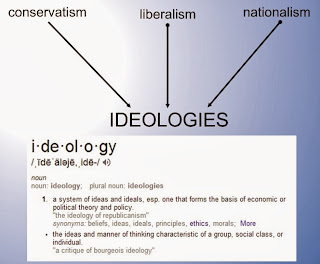Building Digital Citizenship Beyond an Event
I was honored to be invited to write a guest post for the DigCitSummit group and to work closely with David Ryan Polgar to develop a topic and pull it all together. After working hard to develop a digital citizenship curriculum at my new job, I had some reflections on the (very much ongoing) process and best practices. The result is an article that seeks to emphasize that digital citizenship is a new part of citizenship, and should not been seen as -- or taught as -- a separate category.
To learn even more about digital citizenship, register for the DigCitSummit October 3 event to hear from national leaders on this important topic.
Although the realist in me knows that our society at large is not quite ready for this shift, I eagerly await the day when “digital citizenship” is not a special term. Instead, we will talk about citizenship in general. There will be a common understanding that our communications and contributions online should be measured and judged the same way our communications and contributions are in person.
Similarly, just as educators talk about how teaching the whole child is more important than teaching content, my hope is that educators will see that teaching good digital citizenship is an integral part of that whole child. Our children do not see their online lives and their face-to-face lives as separate. All of their interactions -- digital or in person -- are part of one whole life.
We are all learning together
This does not mean students know how to properly express themselves in the digital world. Adolescents are developing their social and individual identities. Just as they struggle with how to communicate effectively in person at this stage of life, online communication must also be a part of their growth.
The reason digital citizenship is an especially hot topic is that adults are also struggling with digital communication and self-expression. Adults are asking themselves: What should I share? What shouldn’t I share? Is it best to engage at a minimal level in the interest of staying safe? Should I mix my personal and professional online connections or keep them separate?
Rasmussen’s study on digital literacy reveals that people of all ages want to embrace the power that digital tools have, but are worried about the risks. So how do we teach our children the right way to participate in this online world if we adults are sometimes unsure or overwhelmed?
Actions schools can take
As a writer and coach in the edtech arena, this is a question I tackle often in conversations with parents, teachers, administrators, and even policy-makers. The premise that all of these discussions must start from is that digital citizenship education should not be a special unit or event. It is all of our responsibility.
Step 1: Start With Teachers
Classroom teachers have a lot to balance. Rather than tossing digital citizenship on their already-full plates, schools need to provide time for reading, discussing, and learning so that educators can clearly form their own understanding of digital citizenship. Some teachers are already quite active on social media, participating in Twitter chats regularly and posting updates of their classes on Instagram or blogs. Others might not be engaging online at all. There is no right or wrong way, as long as teachers are being safe, thoughtful, and know why they have chosen to engage or not.
Step 2: Work With Parents
The next step is to open the dialogue between the school and parents. As students are using technology more and more in their education and personal lives, educators and parents need to be on the same page about which uses are helpful and which are hurtful or distracting. The technology is not inherently bad or good, it is a tool that can be used well or used poorly, just like any other tool. Once parents and educators have a better grasp on these uses, they can work together to teach and monitor children’s use of technology.
Step 3: Talk With Students
There should, of course, be an ongoing conversation with students. Ask them which social media platforms they are using and why. Ask them how they find information online. Adolescents and teens are often eager to share if we really take the time to listen. Educators and parents will never be able to keep up with all of the information and tools our children are using unless we keep them as an equal voice with all others in the digital citizenship discussion.
Step 4: Make a Plan, an Integrated Plan
Finally, schools need to commit to integrating digital citizenship in all classes. When “teachable moments” present themselves, teachers should use common terminology like digital tattoo, digital footprint, etiquette, data, privacy, and more. What’s more, waiting for these “teachable moments” is insufficient. There are plenty of articles and resources on how to effectively integrate digital citizenship in content-area classes at all levels. This one, this one, and this one are great examples.
Digital citizenship is a process, not an event
It is notable that organizations like Common Sense Media and iKeepSafe have incredible stand-alone complete digital citizenship curriculums to offer. Some forward thinking schools, such as the Providence Day School, have published their curricula as well. However, I urge schools that are just getting started to avoid adopting them as special classes or separate programs during the school year. Full integration is a best practice. So, use the excellent resources these groups publish, but be sure they are a part of an integrated long term school-wide plan, and not a one time event.
To learn even more about digital citizenship, register for the DigCitSummit October 3 event to hear from national leaders on this important topic.




.jpg)
Comments
Post a Comment